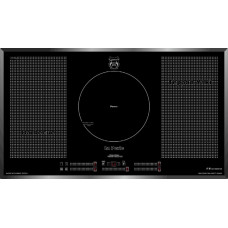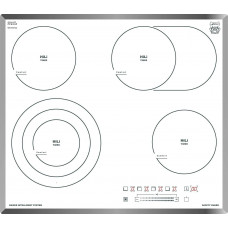CHF 0.00
CheckoutIB-Elektroniks in Switzerland offers cooktops with two, four, and six zones in various models such as induction and ceramic. You can easily order your new kitchen helper online and choose from various payment options such as PayPal, Klarna invoice, and credit card. Choose home delivery and make your life easier!
A cooktop is a cooking surface typically integrated into a kitchen countertop and used for cooking food. There are different types of cooktops, such as electric, induction, or glass ceramic cooktops. Each cooktop has its own advantages and disadvantages as well as features, but all serve the same purpose of heating and cooking food on the cooking surface. Modern cooktops may come with various features such as built-in timers, cooking zones with variable size and power levels, keeping functions, or sensors that monitor the temperature on the cooking surface. Cooktops are an essential part of any kitchen and allow cooks to prepare and cook a variety of dishes.
What types of cooktops are there? Which cooktops are the best?
There are different types of cooktops that work in different ways and may be suitable for different needs. Here are some options:
| Induction cooktops | Ceramic cooktops |
| These cooktops use electromagnetic energy to transfer heat directly to the bottom of the pot without the cooktop itself getting hot. They are fast, precise, and energy-efficient but require pots and pans made of magnetic material. | These cooktops have a smooth, flat surface made of ceramic glass and generate heat through electric heating coils below the surface. They are easy to clean and use but may be slower and less precise than induction cooktops. |
The best choice depends on your individual needs and preferences. If you want to cook quickly and precisely and are willing to invest in magnetic cookware, an induction cooktop is a good choice. If you prefer easy operation and cleaning, a ceramic cooktop is a good option.
Is ceramic or induction cooktop better?
Whether ceramic or induction cooktop is better depends on your individual needs and preferences.
Ceramic cooktops generate heat through electric heating coils below the surface of ceramic glass. They are easy to use and clean, have a smooth surface, and are generally less expensive than induction cooktops. However, they may be slower and less precise than induction cooktops and require some time to heat up and cool down.
Induction cooktops use electromagnetic energy to transfer heat directly to the bottom of the pot without the cooktop itself getting hot. They are fast, precise, and energy-efficient, and the heat can be regulated very quickly and precisely. However, induction cooktops require pots and pans that are compatible with magnetic induction technology. This means that your current cookware might not work on an induction cooktop. You can easily check if your cookware is compatible by seeing if a magnet sticks to the bottom of the pot or pan. If it does, then it will work on an induction cooktop.
Another factor to consider when choosing an induction cooktop is the size and layout of your kitchen. Induction cooktops come in a range of sizes, so you'll want to make sure that you choose one that fits comfortably in your kitchen space. Additionally, if you're replacing an existing cooktop, you'll need to consider the size of the cutout in your countertop to ensure that the new induction cooktop will fit properly.
Finally, induction cooktops tend to be more expensive than traditional gas or electric cooktops. However, they can also be more energy-efficient, which can save you money on your monthly energy bills in the long run.
Overall, if you're looking for a cooking solution that is efficient, safe, and easy to use, an induction cooktop might be the perfect choice for you. Just make sure to consider all of the factors before making your purchase to ensure that you choose the right model for your needs.



 Deutsch
Deutsch French
French Italian
Italian English
English



